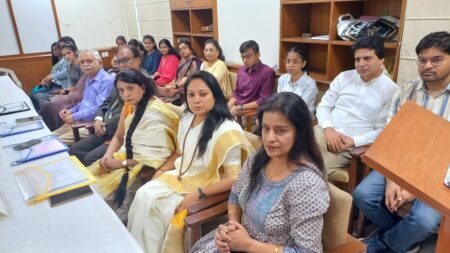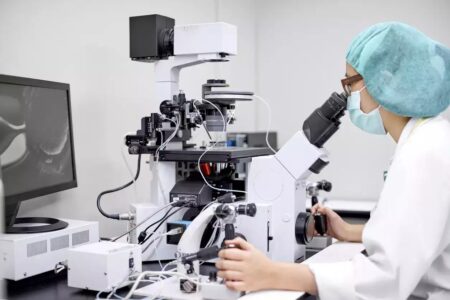AIDS through the ages: Why awareness is key to curbing the widespread epidemic
Dr. Sanket Mankad MD, F.I. D - CMC, Vellore Infectious Diseases & HIV AIDS Consultant Shalby Multispecialty Hospitals AIDS is perhaps one of the most widespread epidemics to have plagued mankind, affecting crores of individuals through the ages. According

Dr. Sanket Mankad
MD, F.I. D – CMC, Vellore
Infectious Diseases & HIV AIDS Consultant
Shalby Multispecialty Hospitals
AIDS is perhaps one of the most widespread epidemics to have plagued mankind, affecting crores of individuals through the ages. According to World Health Organization (WHO), the disease has claimed about 36.3 million lives so far. 6,80,00 people succumbed from the disease in 2020 alone.
AIDS is fatal for adults and children alike and remains one of the most urgent medical crises that continues to affect countless individuals each year. UNICEF, in its latest report identifies that each day in 2020, approximately 850 children became infected with HIV and approximately 330 children died from AIDS related causes. While AIDS patients can continue to live long and healthy lives through proper healthcare, inadequate access to HIV prevention, care and treatment services are the root cause of mortality amongst patients of all age groups succumbing to the disease.
But AIDs awareness remains a huge challenge for health authorities everywhere, owing to the heavy stigma attached to the disease and the widespread division, disparity, and disregard, which are the key failures when it comes to combating this global health crisis. COVID-19 also continues to make access to timely treatment more challenging for AIDS patients, creating a bigger gap between people suffering from the disease and proper healthcare.
As a disease that disproportionately attacks low- and middle-income countries, with a majority of sufferers living in Sub-Saharan Africa, the disease needs the urgent attention of authorities who can identify the gaps and develop strategies to build awareness. With the troubling statistics about the disease world over, it is clear that HIV awareness, testing, and prompt diagnoses continue to lag in low socio-economic areas of the world. In India, populations which are at a higher risk of HIV are female sex workers, men who have sex with men, injecting drug users, and transgenders.
According to UNIAIDs, about 27.4 million people with HIV (73%) were accessing antiretroviral therapy (ART) globally. This means the other 10.2 million people suffering from the disease are yet to get proper treatment. The pandemic further disrupted the widespread global targets to reduce HIV infections and spread awareness, further derailing prevention and treatment efforts owing to social distancing practices across the globe. Hence the goal of reducing new HIV infections to fewer than 500,000, reducing AIDS-related deaths to fewer than 500,000, and eliminating HIV-related stigma and discrimination by 2020 was not met.
However, HIV treatment has come a long way through the ages. As a disease that continued to spread rapidly in the second half of the 20th century, the epidemic was at its peak in 1997. With time, the world has seen a 52% reduction in new HIV infections. In 1997, 3 million people reported new HIV infections, compared with only 2.1 million in 2010 and 1.5 million in 2020. This is because of the availability of a widening array of effective HIV prevention tools and methods and a massive scale-up of HIV treatment in recent years. The focus of the national programmes will be on achieving the following fast track targets:
(i) 75% reduction in new HIV infections,
(ii) 90-90-90: 90% of those who are HIV positive in the country know their status, 90% of those who know their status are on treatment and 90% of those who are on treatment experience effective viral load suppression,
(iii) Elimination of mother-to-child transmission of HIV and Syphilis, and
(iv) Elimination of stigma and discrimination
The awareness process for HIV must encompass all the important spectrums to cover when combating the disease, namely HIV testing, HIV treatment care, HIV Continuum care, and limiting mother to child transmission. HIV testing is one of the most important steps in the process, and extremely important to avoid the transmission of the disease from one person to another. According to UNIAIDS, 84% of the people suffering from the disease knew their HIV status. This is a positive indicator, as testing is the first step towards keeping the virus in check throughout the world. The next step in the process is treatment. As of today, HIV is incurable but can be kept in check through antiret roviraltherapy (ART). Patients who take ART daily as prescribed and get and keep an undetectable viral load can live long, healthy lives and have effectively no risk of sexually transmitting HIV to their HIV-negative partners. With active ART assistance through healthcare workers, the epidemic can be brought down rapidly in the coming years.
Another aspect of HIV awareness is HIV care continuum, which refers to the sequence of steps a person with HIV takes from diagnosis through receiving treatment until his or her viral load is suppressed to undetectable levels. With 66% of AIDS patients virally suppressed by 2020, there is abundant hope for the world against the disease, at a scale never experienced before. Curbing the spread of the disease from an HIV positive mother to her child is another big step in limiting the disease in the young population. According to the UNIAIDS report, in 2020, 84% of pregnant women with HIV received ART to prevent transmitting HIV to their babies during pregnancy and childbirth and to protect their own health. This is a huge step in helping to stop the spread of the disease in the next generation.
As global authorities continue to come together to collectively combat the deadly virus, the aim remains the same. Creating a new generation of healthy children, and safeguarding HIV positive lives throughout the world, to help them lead a healthier life. Spreading awareness about AIDs is not just about improving the quality of life for patients, but also helping them live a life free of stigma and discrimination.






